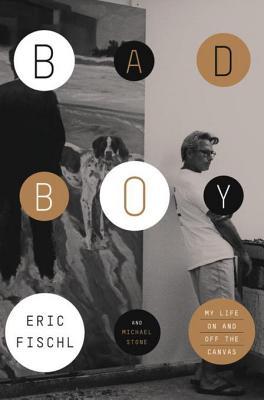
Bad Boy
My Life On and Off the Canvas
کتاب های مرتبط
- اطلاعات
- نقد و بررسی
- دیدگاه کاربران
نقد و بررسی

March 25, 2013
In this patchy, but forthright memoir, Fischl, whose paintings of suburban life propelled him to celebrity in the 1980s, chronicles his struggles to bring a personal style and voice to the canvas, to render “characters that were real enough, sincere enough, and vulnerable enough to command empathy,” as he grapples with a past haunted by his mother’s alcoholism and, ultimately, his own substance abuse within New York’s decadent art world. The book, written with Stone, mainly focuses on Fischl’s artistic life, and the chapter on his student days at CalArts in the early 1970s is among the book’s richer moments. Under John Baldessari, CalArts was a hub of conceptualism, and painter Fischl was “consigned to the school’s backwaters.” Though the memoir (unlike his best paintings) is not particularly sensitive to the nuances of either people or events, Fischl discusses art with an infectious enthusiasm. Whether describing the evolution of “Sleepwalker,” or the similarities between tennis and painting, the artist’s fervor is palpable. Fischl, however, has previously made much stronger, more eloquent defenses of his bronze “Tumbling Woman” statue, which opened in Rockefeller Center on the first anniversary of the 9/11 attacks to widespread controversy. The suggestion that the controversy about the work had to do with American culture’s “stubborn refusal to address issues of aging and mortality” is hardly convincing. Two 8-page full-color photo inserts. Agent: Mark Reiter, the Reiter Agency.

March 15, 2013
A celebrated contemporary American artist, now in his 60s, paints his life and offers a review. Fischl, whose striking painting Bad Boy (1981) provides the title, teams up with veteran journalist Stone to tell the story of his unlikely discovery of his passion for art, his rise to celebrity in the 1980s and his adjustment--not always amiable--to the arrival of the next generation. Fischl begins with an epiphany occasioned by a 1986 traffic incident. He realized he had lost control of his life (booze, cocaine) and did not like "the miserable, belligerent guy I had become." Time for a rebirth. But first he takes us back to his childhood, advancing swiftly to the mid-1960s, when he discovered that art was the only endeavor he wished to pursue. Throughout, Fischl surrenders pages to other players in his story--family members, friends and colleagues--and allows them to relate their version of events. It's a novel strategy, but unfortunately, most of them just shower praise on the artist--it all grows rather cloying. Fischl describes his love affairs, his life with (and eventual marriage to) artist April Gornik, his screw-ups and triumphs and his relationships with fellow artists, dealers and buyers. He pauses continually to talk about his philosophy of art and specific works, describing their origin (he says he never knows what he's going to do until he's done it), their execution and their not-always-positive reception. His sculpture Tumbling Woman for 9/11 had a hostile reaction and was removed from its site. Generally generous and self-deprecating, he does attack some of his successors, among them Damien Hirst, whose work he calls "shallow." Best for the discussions of his own work; worst for the gushing offered by some of his contributors.
COPYRIGHT(2013) Kirkus Reviews, ALL RIGHTS RESERVED.

May 15, 2013
How much fame does it take to stop an artist from working in top form? How much pain does it take to keep an artist going? Controversial painter and sculptor Fischl addresses these questions with almost masochistic honesty in this revealing memoir. While chronicling his upbringing in a troubled family savaged by his mother's suicidal alcoholism and his highs and lows in the shifting New York art scene of the 1970s and 1980s, Fischl offers raw confessions of the emotional hardships that drove his life as a professional artist along with revelations about his own evolving creative ethos. As with his acclaimed and notoriously provocative portraits, Fischl's self-portrait draws its best energies from exhibition and confrontation as he pulls no punches in depicting his experiences as a gritty bohemian and upscale urbanite. Fischl's look back is equally absorbing as an insider's chronicle of the late twentieth-century art world's booms and busts. Complementing each chapter are commentaries from Fischl's friends, mentors, and lovers; the result is a remarkably objective warts-and-all memoir.(Reprinted with permission of Booklist, copyright 2013, American Library Association.)

























دیدگاه کاربران